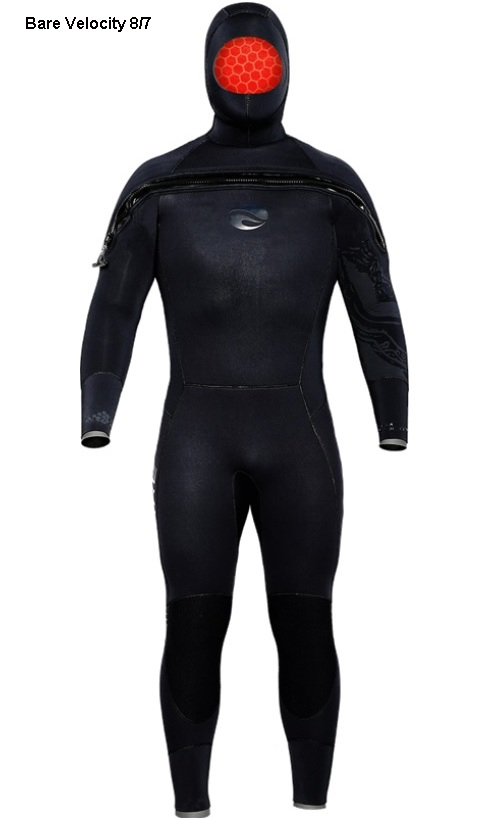As a young diver, I have had the luxury of soft, warm and comfortable wetsuits even though I am diving in an 8mm thick suit. In Canterbury, I dive in the alpine lakes, such as Lake Coleridge and the temperature can get down to 6 degrees. Everyone assumes we dive in dry suits, however, for myself and my students that is not a luxury we can afford right now. A snug fitting tailored and warm wetsuit is what we need.
Wetsuits are designed with a closed cell neoprene. The neoprene filled with gas bubbles that slow the conduction process taking heat slowly away from your body. Wetsuits allow water in between the neoprene lining and your skin. Once trapped your body heats up the water. Granted the water stays trapped, this allows the neoprene to insulate you. If your suit doesn’t fit well, more water will circulate around the body and cool you down quickly. This is why a snug proper fit is so important.
The technology to make closed cell neoprene has been around for decades. The basic material hasn’t changed however, nowadays, added extras such as softening agents make modern suits more flexible. Companies have also added in materials into their suits to help keep you warmer. Take the Bare Velocity for an example. Bare has developed a mineral called OMNIRED. OMNIRED’s 13-thermo reactive minerals are embedded in the fabric of material. They convert outbound body heat into thermal energy and reflect it back to the body. This, and other varieties from other companies, added with the softer neoprene is what makes up the modern, top of the line wetsuit. It is also what we call a semi dry wetsuit.
Semi dry means that the design of the suit allows minimal water to enter and be heated by the body. This, slowing down the amount of water needed to be heated by the body. Design features such as, wrist, ankle, neck seals and dry zips are all designed to keep the water out.
Other things to keep in mind when purchasing a wetsuit are the thickness of the neoprene, lining, durability and style. The thickness ranges from about 1.5mm to 8mm. obviously the thicker it is then the warmer you will be. 7mm or 8mm wetsuits are suggested to be used in temperatures down to 10 degrees. But sometimes you have to tough it out to get the job done as we do here in Canterbury. This is when you should consider purchasing a drysuit.
Wetsuits have material linings to make it easier to put on. Other suits, like freediving suits, are unlined on the inside to help keep a close fit to the skin which is extra warm. The downside of unlined (open cell) suits is that they are more difficult to put on and easier to tear. We have had student’s complete courses in the cold water wearing 5mm open cell suits while the rest of us in our 7mm suits have been colder.
The durability of suits comes from the jersey, which is the limning on the outside of the neoprene. Added with knee and elbow pad or reinforcement in the back. As classic kiwis, buying things once and wanting it to last for 10 years, are finding it easier to find suits with a mixture of durability and comfort. Unfortunately, you are bound to have nicks or tears in your suit eventually… Lucky we can glue them to get you through another season.
There are two main styles of wetsuit, one piece and two piece. I have found there are many arguments as to which is better, but it comes down to the individual. In New Zealand, I see a lot of people coming in, to put it politely, have more to love in the stomach area, no arse and pin legs. Making it hard to find a one piece that fits properly. The two piece, you can generally change the size between the jacket and long johns. Miss matching sizes to get the proper fit. Some argue that two pieces have more flexibility. Some argue that they are warmer due to the extra thickness around the chest.
I have had some great wetsuits in the past, all with different features and pros and cons. I have experimented with back zips vs front zips, one piece vs two piece. I am currently using a one piece, front zip semi dry from Bare. I’m lucky that my body shape fits it and that it is flexible and soft to allow me to get in and out of it almost as easily as a two piece.
Please remember that you need to try on the suit before buying and always ask our Dive HQ staff if you have questions and need some help.
